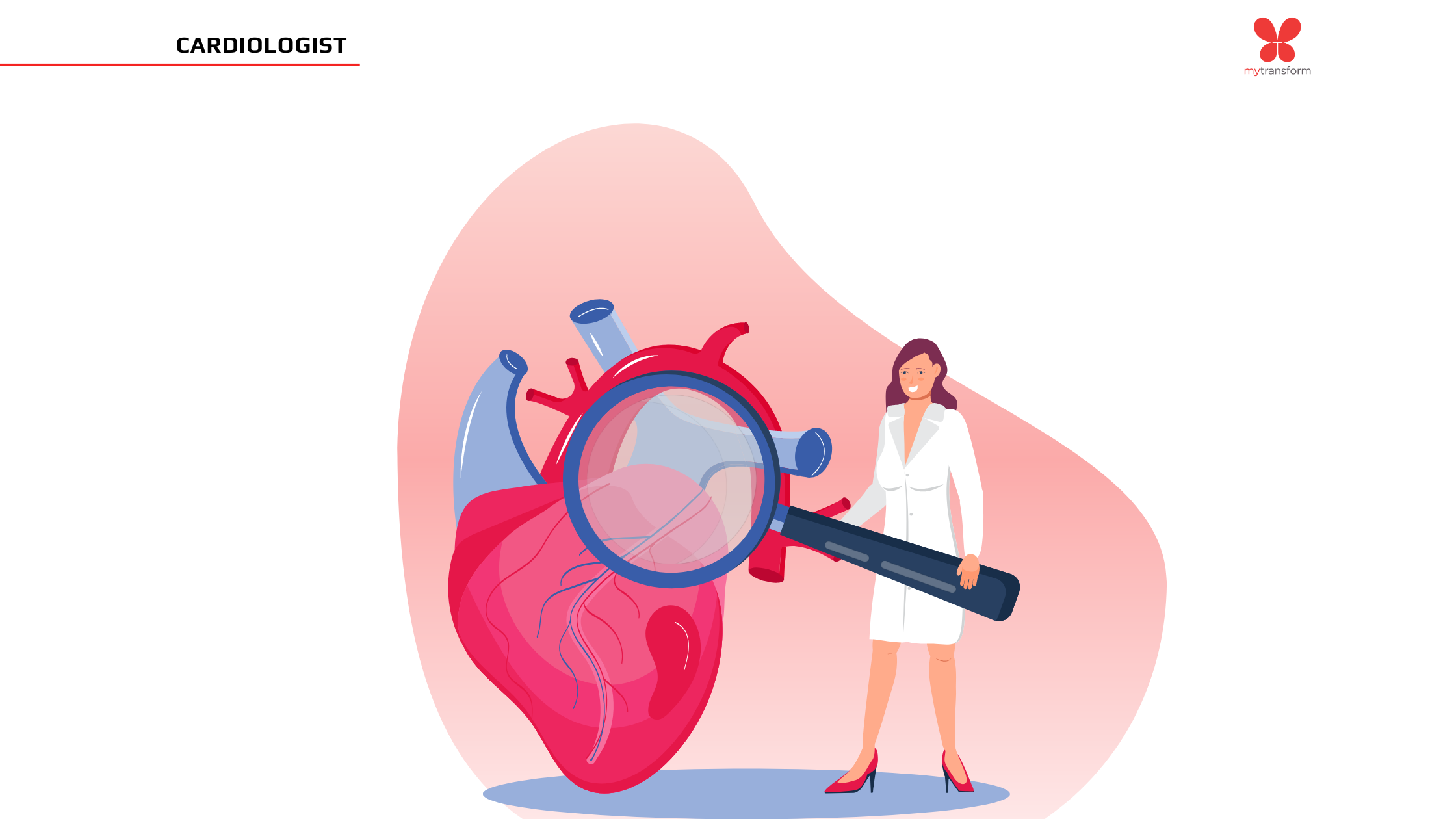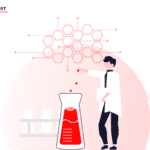
Individuals who wish to become Cardiologists must first obtain a general physician license and then complete a lengthy training program in order to be licensed to perform the duties of a Cardiologist.
Cardiologists are in charge of diagnosing and treating cardiovascular system-related problems with medication or surgery.
However, for both medicines and surgery, physicians must obtain a certificate, which can only be obtained after completing the entire training process.
Who is a Cardiologist?
Cardiologists are doctors who specialize in diagnosing and treating the cardiovascular system. To become a certified cardiologist, physicians must first complete specialized training.
Cardiologist specialists are also in charge of diagnosing the functions of various other internal organs related to an individual’s cardiovascular system, such as blood vessel functions.
Types Of Cardiologists
The types of Cardiologists are:
1. Doctor
A doctor is a medical expert who helps people get the care they need. He or she looks at patients and looks for signs of diseases, disorders, and illnesses.
In a hospital, clinic, or clinical lab, a doctor performs surgery, prescribes medicine, and treats patients in other ways.
2. Cardiology Surgeon
A cardiology surgeon is a doctor who specializes in heart and blood vessel surgery. A cardiac cardiologist must have extensive education and training, which includes undergraduate, postgraduate, and internships.
A medical license issued by the government is also required.
3. Interventional Cardiologist:
An interventional cardiologist is someone who receives one to two years of additional training to learn how to diagnose and treat diseases affecting the human cardiac muscles. A cardiologist is also in charge of treating a variety of cardiovascular diseases with a drug known as catheterization.
4. ECG (Electrocardiographic) Specialists
Cardiographic or electrocardiographic specialists: A cardiographic or electrocardiographic specialist works with patients to help physicians diagnose and treat heart diseases such as irregular heartbeat and arrhythmias. These cardiologist doctors work under the supervision of a specialized cardiologist.
5. Surgeon
A surgeon does simple and minimally invasive surgeries that only take a few minutes or invasive and complicated surgeries that take a long time to finish. Since a surgeon works on a living person, there is a high risk to their life.
To avoid any sort of accident during surgery, a surgeon must be aware, ready for any kind of emergency, and able to save a life at any time.
6. Radiation Therapist
A radiation therapist’s job requires him or her to pay attention, work hard, and show up to work on time every day. A radiation therapist is on their feet for a long time and may have to lift or turn patients who can’t move on their own.
Roles And Responsibilities of a Cardiologist
The Roles And Responsibilities Of a Cardiologist are:
1. Patient Examination
Cardiologists are frequently referred by other physicians who want confirmation that a patient has a cardiovascular condition or advice on how to best treat the patient.
When a patient has a heart attack, a serious arrhythmia, or heart failure, cardiologists are called in to help.
Given that cardiologists are typically not the first doctors to see a patient, they must swiftly assess the patient’s medical history and ask questions concerning symptoms.
2. Treating Patients
Once a cardiologist has determined the cause of a patient’s symptoms, (s)he must select the most appropriate course of treatment. If the patient needs heart surgery, such as a valve replacement, he may have to refer him to a cardiologist.
(S)he may determine that pharmaceutical intervention is necessary to remedy the patient’s condition. If a patient’s heart health requires them to make changes in their lifestyle, the cardiologist may offer advice on how to do so.
Following a cardiac event, a patient may need to see a cardiologist for follow-up care, such as periodic examinations. Possible roles include team members, working with other doctors and medical staff to improve a patient’s health in concert.
If you’re looking for a surgeon, you won’t find a cardiologist. Some cardiologists, however, are able to do minimally invasive operations such as cardiac catheterizations, defibrillator implants, and pacemaker insertions.
3. Testing Procedures and Their Analysis
A cardiologist frequently needs to order tests in order to make a diagnosis or determine the best treatment options.
Cardiologists may recommend a test called echocardiography, which records the heart’s electrical activity and provides an image of its anatomy. The efficiency of a patient’s heart is measured when it is working hard during a stress test.
A cardiologist may use blood tests and x-rays to help make a diagnosis or plan of treatment. Cardiac catheterization includes inserting a small tube near or into the heart to measure electrical impulses, take pictures, or assist in the removal of a blockage.
Cardiologists must interpret the results of the tests once they have been completed.
4. Team Management
To ensure patients receive the necessary care, treatment, and services, cardiologists must coordinate their efforts with support workers.
He or she is also responsible for ensuring that the operating team develops the most effective and standard approach to providing excellent service.
As a cardiologist, one is expected to manage the team so that everyone is working towards the same goal.
5. Work on Maintenance
Individuals who choose a career as a cardiologist serve as clinical experts within the hospital, disseminating specialist skills and knowledge to all disciplines.
In difficult and stressful circumstances, a cardiologist must also deal with caregivers and direct patient contact.
The job of a cardiologist is to maintain and promote effective communication among all members of the multidisciplinary team as well as all hospital departments.
6. Additional Assistance
Individuals who choose a career as a cardiologist provide and demonstrate sound clinical leadership, as well as create support mechanisms for sharing best practices and encouraging and directing innovation in ongoing perfusion development.
Juniors in the process of becoming cardiologists look up to him or her in order to learn something. One must lead the juniors who report to him or her in order to establish a better learning process.
Eligibility to become a Cardiologist
Candidates interested in becoming a Cardiologist must first pass the required medical entrance exam. To take the entrance exam to become a general physician, students must have studied biology in their 12th grade, as well as mathematics, physics, and chemistry.
Students must obtain their general physician license after passing the medical entrance exam. To obtain the license, students must complete a 5-year training program as well as one year of fellowship.
After obtaining a general physician practice license, interested candidates must take a screening test to become a Cardiologist.
Following the selection process, candidates must complete another three years of training and one year of fellowship to obtain the license to practice as a Cardiologist expert.
How to Become a Cardiologist in India? – Step-By-Step Guide
To Become A Cardiologist In India, follow this Step-By-Step Guide:
Step 1: Clear 10+2
Students must understand how to become a cardiologist in India after completing their secondary education. We’ll walk you through the steps to becoming a cardiologist after high school.
Students must have earned a minimum of 60% in their combined 10+2 science courses from an accredited institution or university. In this section, we’ll discuss the steps necessary to enter the field of cardiology and become a cardiologist.
Step 2: Entrance Examination
In India, entrance exams are conducted by a number of cardiology colleges to let people in. Students must take entrance exams to get into colleges and universities.
Admissions are based on how well a student did on the entrance exam for his or her preferred university. In order to be a successful cardiologist, you need to get an M.B.B.S.
Popular Entrance Exams:
-
- NEET PG
-
- Jawaharlal Institute of Postgraduate Medical Education and Research Entrance Exam.
-
- BHU M.D. / M.S. Entrance Test
-
- Delhi University Post Graduate Medical Entrance Test
Step 3: Bachelor
After passing the 10+2 exam, students have to sign up for a bachelor’s degree program. If you want to become a cardiologist, you should get a bachelor’s in M.B.B.S.
One of the most popular courses in cardiology is MBBS (Bachelor of Medicine and a Bachelor of Surgery)
Step 4: Post Bachelor
After completing a bachelor’s degree, students must pursue postgraduate studies in cardiology.
Unlike other fields, one cannot become a cardiologist immediately after graduation; one must first complete post-graduate studies before becoming a cardiologist.
There are several options for directing their career path. For those interested in pursuing this profession, there are several degrees and diploma courses available, such as PGD, M.Sc, and M.Ch.
After that, he or she will be able to begin practicing cardiology professionally.
Popular courses for Post Bachelor Cardiology are:
-
- PG Diploma in Clinical Cardiology Course (PGDCC)
-
- Diploma in Cardiovascular Technology
-
- Master of Science in Cardiological Nursing
-
- Post Graduate Diploma in Community Cardiology
-
- Doctor of Medicine in Cardiology
-
- M.Ch in Cardiology
-
- DNB Cardio-Thoracic Surgery
-
- M.Ch Cardiovascular and Thoracic Surgery
Career Opportunities for a Cardiologist
These days, cardiologists are in high demand. Although becoming a cardiologist involves years of training and a lot of dedication, the industry is rewarding for those who stick with it.
There are numerous cardiologist consultant job openings in both the public and private sectors. This is primarily due to the advancement of science and technology.
Cardiology colleges are springing up all over India. Another reason is the fast-paced lifestyle, which causes heart disease in people at a young age.
A cardiologist’s job growth is expected to be 6.8 percent by the end of 2026. It is higher than the national average for most medical specializations.
The top 10 Career Opportunities in Cardiology are:
-
- Cardiovascular technician
-
- Exercise physiologist
-
- EKG technician
-
- Cardiology consultant
-
- Anesthesiologist
-
- Respiratory Therapist
-
- Medical sonographer
-
- Cardiology physician
-
- Cardiac nurse
-
- Surgeon
Cardiologist Salary
Cardiac Catheterisation Technologist (Monthly Salaries)
| Average Salary | 40000 |
| Junior Level Salary | 30000 |
| Senior Level Salary | 50000 |
Nuclear Cardiovascular Specialist (Monthly Salaries)
| Average Salary | 50000 |
| Junior Level Salary | 55000 |
| Senior Level Salary | 59000 |
Director of Cardiology (Monthly Salaries)
| Average Salary | 60000 |
| Junior Level Salary | 55000 |
| Senior Level Salary | 70000 |
Top Medical School For Cardiologists
The All India Institute of Medical Sciences (AIIMS) is widely regarded as the most prominent university in India for medical students.
On the other hand, a number of public colleges have disclosed their plans to establish medical education programs.
Additionally, PGIMER has been recognized among the best 25 medical colleges in all of India.
The Christian Medical College, which is located in Vellore, has successfully maintained its position as one of India’s top 10 medical institutes.
On the other hand, King George’s Medical University, JIPMER, and BHU are some examples of prestigious medical colleges in India.
The state education regulating authorities in India are responsible for administering these colleges, which place them among the top 10 medical colleges in India.
Pros & Cons
The Pros and Cons of being a Cardiologist
Pros
-
- The maximum amount of versatility and the opportunity to work for various companies at the same time.
-
- Extremely low supply relative to the extremely high demand for cardiac specialists who are board-certified.
-
- A chance to become familiar with the process of worldwide treatment as well as exposure to a medical treatment facility located on a global scale.
Cons
-
- India struggles with a severe lack of infrastructure.
-
- Huge amount of labor to be done in a setting that is difficult.
-
- There is a significant possibility of death for the patient if the treatment is administered incorrectly.
Summary
-
- Cardiologists are doctors who specialize in diagnosing and treating the cardiovascular system. To become a certified cardiologist, physicians must first complete specialized training.
-
- A cardiology surgeon is a doctor who specializes in heart and blood vessel surgery. A cardiac cardiologist must have extensive education and training, which includes undergraduate, postgraduate, and internships. A medical license issued by the government is also required.
-
- Cardiologists are frequently referred by other physicians who want confirmation that a patient has a cardiovascular condition or advice on how to best treat the patient.
-
- Candidates interested in becoming a Cardiologist must first pass the required medical entrance exam. To take the entrance exam to become a general physician, students must have studied biology in their 12th grade, as well as mathematics, physics, and chemistry.
-
- These days, cardiologists are in high demand. Although becoming a cardiologist involves years of training and a lot of dedication, the industry is rewarding for those who stick with it.
-
- The All India Institute of Medical Sciences (AIIMS) is widely regarded as the most prominent university in India for medical students.
Frequently Asked Questions
A cardiologist typically takes 10-13 years to train. They are experts in the treatment of congenital heart defects, heart failure, coronary artery disease, and valvular heart disease.
A career as a Cardiologist is financially and professionally rewarding. As the number of heart patients increases, so will the number of super specialty heart care centers, broadening the scope for cardiologists.
There are numerous job opportunities for cardiology specialists.
NEET is not mandatory to pursue BSc Cardiology; instead, you must have a 10+2 in science with Physics, Chemistry, Biology, and English as core subjects
The majority of cardiologists work long hours and lead stressful lives.
According to Medscape, nearly half of all cardiologists—47 percent—said they were either very or extremely happy outside of work, but this still fell short of the percentages reported by rheumatologists, endocrinologists, radiologists, and oncologists.
Cardiology is a good course for postgraduates to take because it pays well. People can get an MD (Doctor of Medicine) or MS (Master of Surgery) in cardiology or, more specifically, in cardiothoracic surgery.
For any undergraduate course on cardiology, you should finish the 5.5 years of M.B.B.S.
For general category students to be eligible for MBBS, they must get a total of 50% in physics, chemistry, biology, and English on the 10+2 board exam.
The responsibility of saving patients’ lives as a cardiologist can put a strain on your own heart and even raise your blood pressure.
To become a cardiologist, regardless of gender, one must be an excellent and professional physician who works well with others to improve cardiovascular care.
Cardiologists who work in a clinic usually have set office hours, but those who work in a hospital may have to work nights, weekends, and holidays, as well as take turns being on call.
Cardiologists could work as much as 80 hours a week.
Many doctors, in fact, the majority of doctors, are really busy. Some of them only see patients, while others do everything to keep their social life alive.




